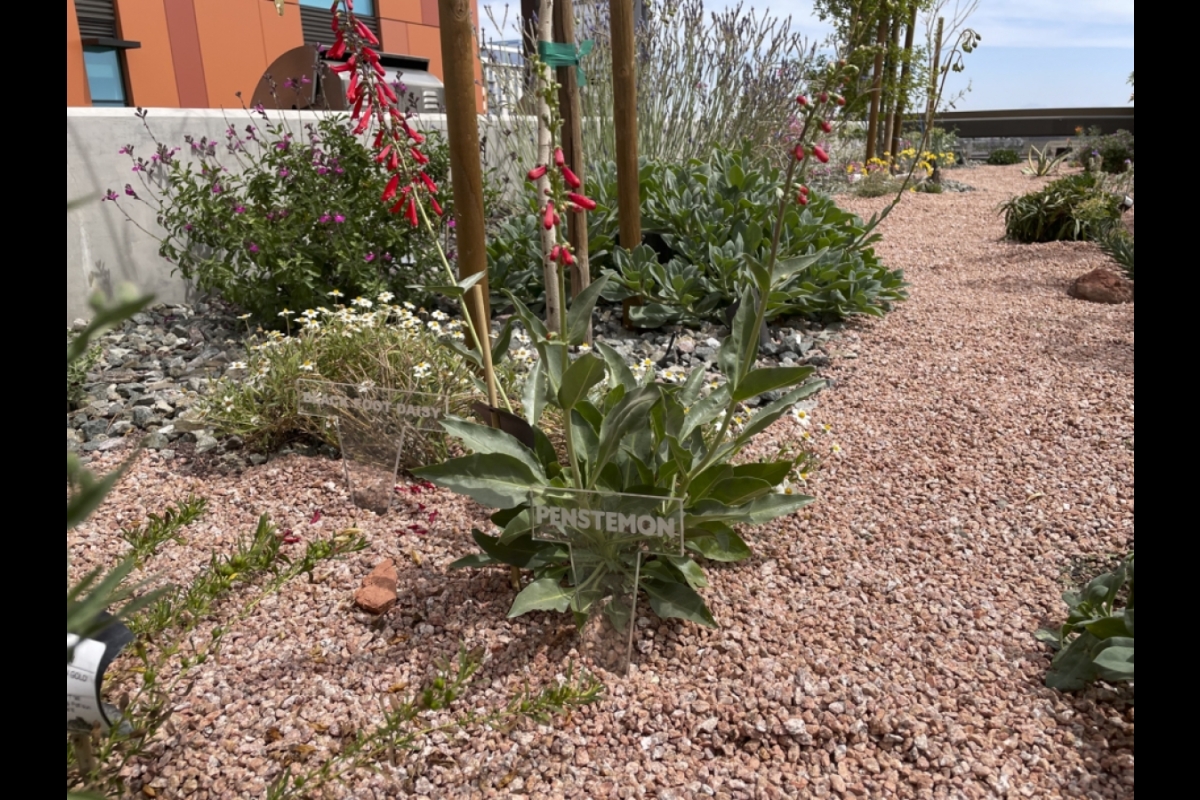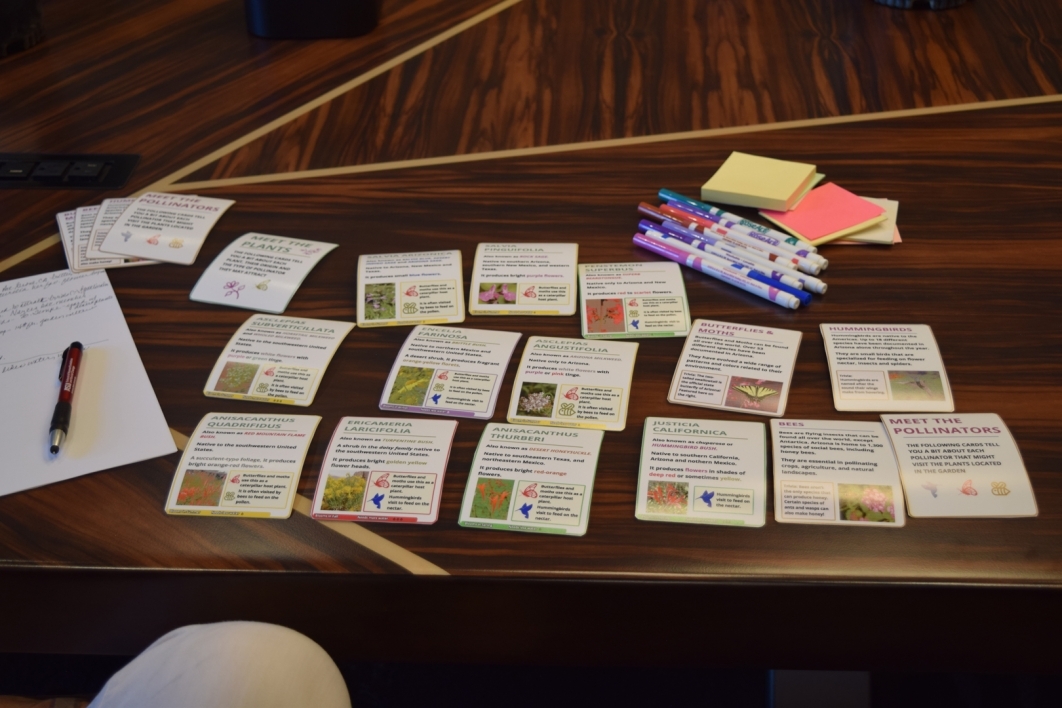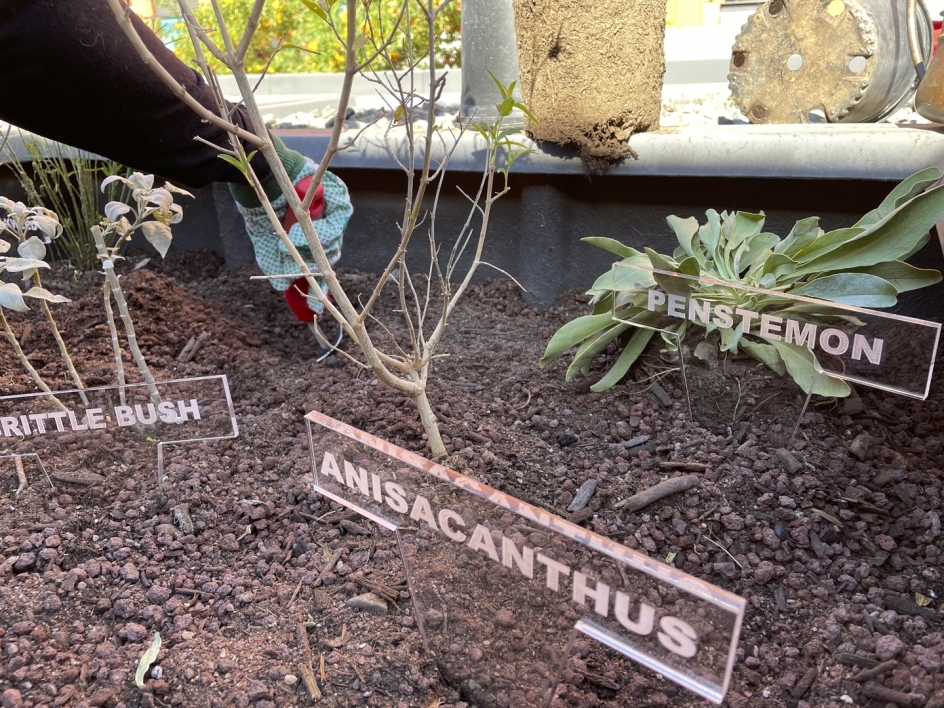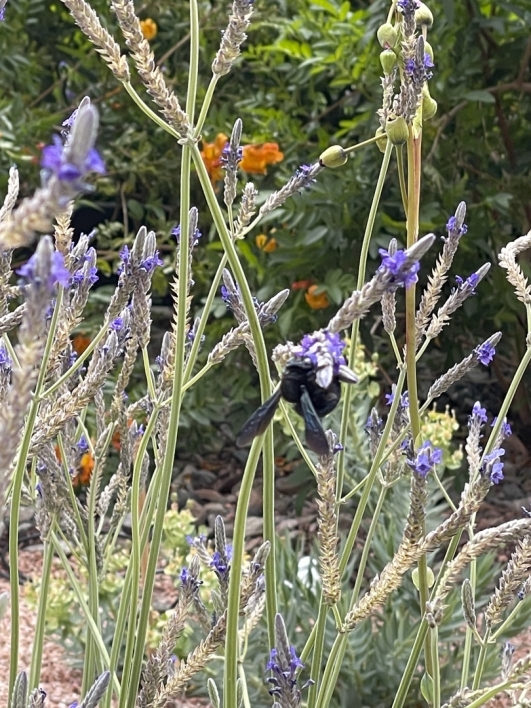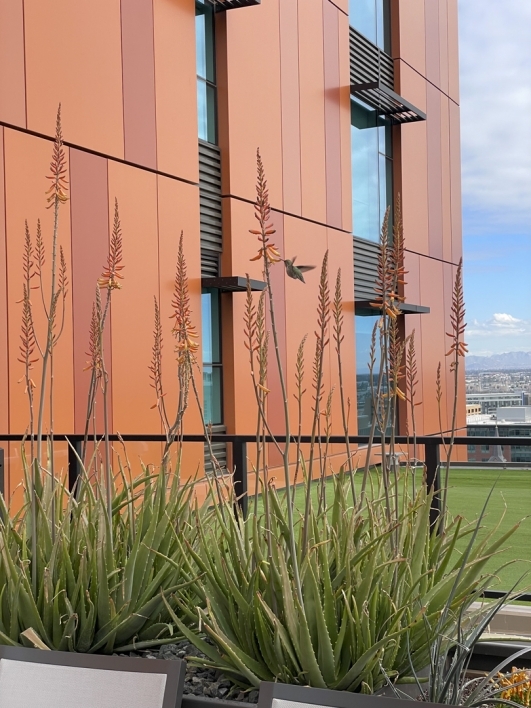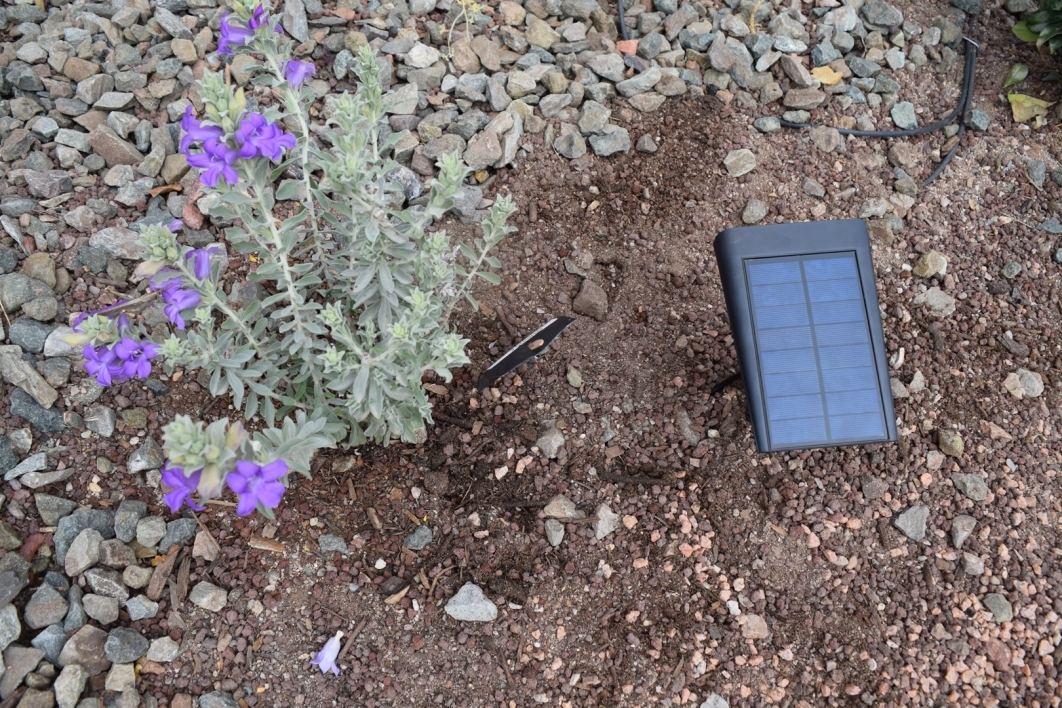Researchers co-design pollinator garden with Mirabella at ASU residents
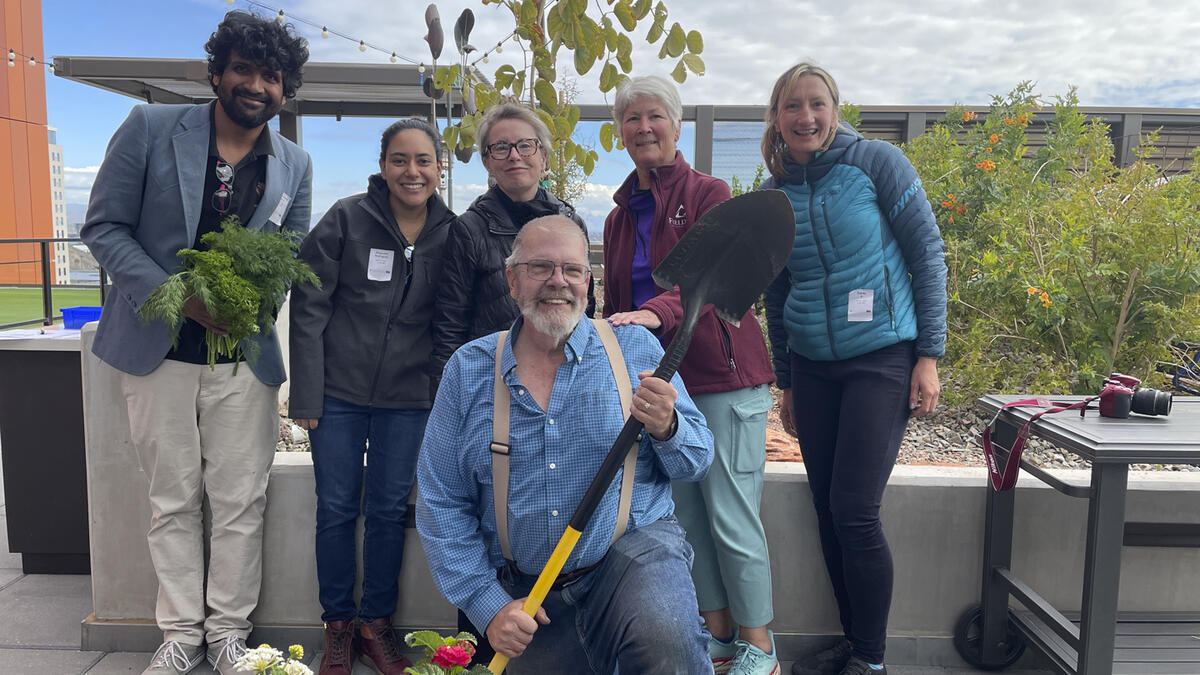
Members of the Mirabella pollinator garden group at Mirabella at ASU. Photo courtesy Professor Stacey Kuznetsov
Spring has sprung, and the residents of Mirabella at ASU are warming up with gardening thanks to faculty and students from the Arizona State University School of Arts, Media and Engineering.
The project to explore pollinator gardens as sites of community science and environmental activism started in 2021 with a seed grant and continues to flourish. The project is led by School of Arts, Media and Engineering Assistant Professor Stacey Kuznetsov, in collaboration with Tejaswi Gowda, clinical assistant professor in the School of Arts, Media and Engineering; Darlene Cavalier, professor of practice in the School for the Future of Innovation in Society and senior global futures scientist; and Alejandra Rodriguez Vega, a PhD student at the School of Arts, Media and Engineering.
Over the past year, researchers have been co-designing a pilot pollinator garden and data collection kit with Mirabella and working with residents at the ASU retirement community to collect pollinator observations.
The team recently received a Herberger Research Council award to support this ongoing multidisciplinary collaboration, which includes developing tools to support public engagement with science around local pollinator plants and insects. The hands-on experience of working with various local seeds is educational for the residents. Mary Warren, a resident of Mirabella at ASU, said that being a part of the research is thrilling for all.
“We have flowers, veggies, cacti and succulents, native wildflowers, and even Hopi corn,” she said.
The researchers said they hope this opportunity for the residents to contribute instills belonging and that the outdoor activity supports their happiness.
“Residents really missed playing in the dirt,” Warren said. “With a year of experimenting with small bin gardening, and having a good time with each other, we are actually attracting more gardeners to plant their own gardens,” she said.
This year, the team has incorporated digital technology to collect more data. Sensors that record wind speed, temperature and soil moisture will help future designs.
"We hope to use the sensor data to study how environment conditions and plant species correlate to the frequency of visiting pollinators," Kuznetsov said.
Mirabella residents also take part in collecting data and sharing data to an app.
“Gardeners welcome the bees to the flowers and bolting vegetables and delight in the frequent visits by hummingbirds and a butterfly or two. Several of us attempt to add these observations to the iNaturalist Mirabella community garden project online,” Warren said.
The goal is to eventually correlate observations with sensor data, including temperature, UV levels, wind, soil moisture and air quality. The researchers said they see the pollinator garden as touchpoints for citizen science, as well as a site for advancing multidisciplinary research in social science, life sciences, human-computer interaction and Internet of Things.
Kuznetsov said there are 37 people in the Mirabella garden club who have participated, and Mirabella is also attracting local visitors who are interested in gardening. Groups of all ages enjoy this study that will benefit future environments.
“3- to 5-year-olds from the ASU Child Development Lab visited last week to compare what we are growing with their own raised beds,” Warren said. “And Mirabella residents 'ooh and ahh' over the garden at least weekly when they come to the rooftop terrace for the Ladies Who Lunch Bunch and our Friday happy hour.”
More Science and technology

ASU-led space telescope is ready to fly
The Star Planet Activity Research CubeSat, or SPARCS, a small space telescope that will monitor the flares and sunspot activity…

ASU at the heart of the state's revitalized microelectronics industry
A stronger local economy, more reliable technology, and a future where our computers and devices do the impossible: that’s the…

Breakthrough copper alloy achieves unprecedented high-temperature performance
A team of researchers from Arizona State University, the U.S. Army Research Laboratory, Lehigh University and Louisiana State…


